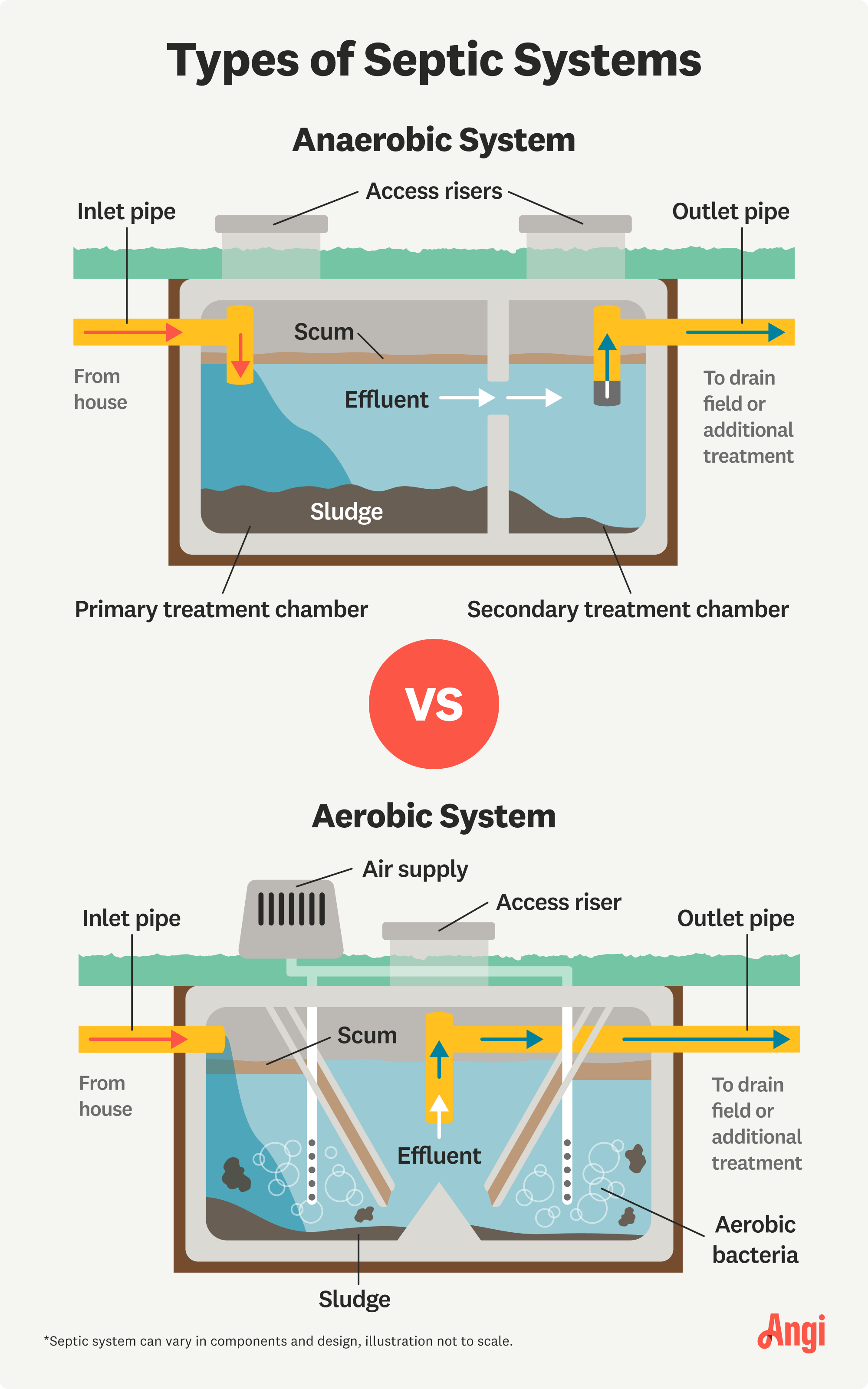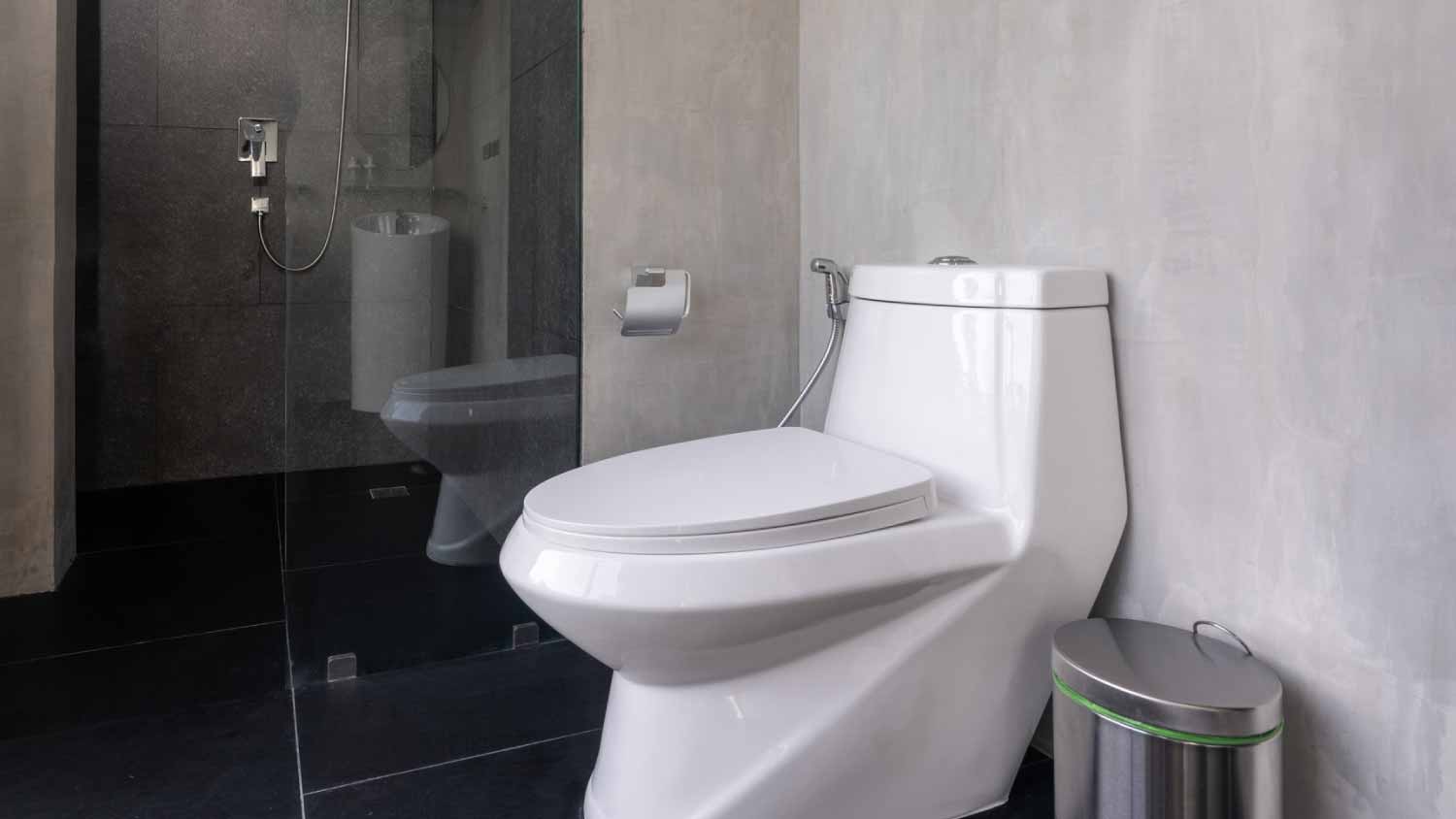
You should do a septic inspection once every one to three years to ensure you don’t have any issues. Learn about septic inspection costs before scheduling.
Septic tank service costs depend on your project and location. Check with a local pro for your specific job.
Septic systems in Minnesota are also called Subsurface Sewage Treatment Systems (SSTS) and are regulated by the Minnesota Pollution Control Agency (MPCA).
Septic system pros need to be licensed through the Minnesota Pollution Control Agency.
Concrete is a common septic tank material in Minneapolis because of its durability, but installing it is challenging.
In Minnesota, about a third of residents have a septic system to dispose of household waste and water. The cost to install a septic system in Minneapolis averages $6,614 and ranges from $5,575 to $8,000. A sewer pro can give you an estimate based on the tank material and size, as well as the cost of site prep, labor, and permits.
Installing a septic system in Minneapolis requires choosing the right tank size for your home and the best material. The cost will depend on these factors, as well as the type of system and the amount of site preparation you need.
The septic tank size you need will depend on the number of bedrooms your home has. For a three- or four-bedroom home, you’d need a 1,000-gallon septic tank, which costs $1,250 to $1,500 for the tank alone.
Larger houses have more sinks, toilets, bathtubs, and other wastewater sources that flow into the septic tank. As tank size increases, so do costs.
| Household Size (Bedrooms) | Tank Capacity (Gallons) | Average Cost |
|---|---|---|
| 1 | 500 | $500–$900 |
| 2 | 750 | $900–$1,200 |
| 3–4 | 1,000 | $1,250–$1,500 |
| 5–7 | 1,500 | $1,500–$3,200 |
| 8–9 | 2,000 | $2,300–$3,450 |
Septic tanks are commonly made of plastic, concrete, or fiberglass, with fiberglass being the most expensive. Concrete is a popular septic tank material in Minneapolis thanks to its strength and durability. Here’s how much a tank costs based on each material.
| Piping Material | Average Cost | Pros | Cons |
|---|---|---|---|
| Plastic | $1,100–$3,200 | Lightweight, easy to install, less expensive than fiberglass | Less durable, more prone to cracking under the pressure of soil |
| Concrete | $1,800–$2,400 | Highly durable, most common type | Prone to cracking, labor will significantly increase the cost |
| Fiberglass | $3,200–$4,10 | Nonporous to protect against algae growth, lightweight, easy to install | Can crack during installation, more expensive |

Each type of septic system comes with its own set of pros and cons. While anaerobic systems are relatively low-maintenance, they aren’t great for small properties. Similarly, anaerobic systems can do well in small spaces but require extra work.
| Anaerobic | Aerobic |
|---|---|
| Anaerobic bacteria break down waste | Aerobic bacteria break down waste |
| More affordable | More expensive |
| Uses fewer chemicals | More efficient |
| Needs a larger leach field | Good for smaller properties |
Anaerobic: Anaerobic systems are more common and cost $3,000–$8,000. They’re less costly than aerobic systems and don’t need extra power or chemicals, but they’re less efficient and require a larger leach field. A pipe runs from the house to the septic tank, where another pipe runs into the leach field. Anaerobic bacteria break down solid waste before the system distributes the wastewater into the soil.
Aerobic: Aerobic septic systems utilize oxygen pumped into the tank to activate bacteria that feed on the solid waste. They’re more expensive at $10,000–$20,000 but are more efficient and work well on smaller properties. They require additional power to run, so hook yours up to a power generator in case of a power outage. Otherwise, these systems can plug into your property’s main power source.
Site prep in Minneapolis includes conducting a land survey and a percolation test to identify your property lines and the soil condition, and installing a leach field to transport the wastewater to the soil.
Land Survey: You’ll need to get a land survey before installing a septic system to ensure your plans fall within property lines. Expect to spend $330–$900 to hire a licensed land surveyor.
Percolation Test: Before the installation, you need a local perc test pro to perform a percolation test. The test measures water drainage in the soil, soil type, and the height of each sediment layer on your property to determine the best type of septic system for you. The cost to test your soil is $700–$2,000.
Leach Field Installation: Septic tank systems consist of a septic tank and a trench referred to as a leach field or drain field. This section of the system transports the wastewater back to the soil. Drain field installation costs $5,000–$12,000.
A septic system pro in Minneapolis, Minnesota, can recommend tank size and materials and help you obtain the proper permits before starting the installation.
The State of Minnesota requires that on-site septic professionals be licensed by the Minnesota Pollution Control Agency (MPCA), so it’s important to verify your septic system professional’s licensing. The excavation and labor for installing a new septic system can cost between $2,000 and $4,000.
Permits and inspections to ensure that your septic system is designed and installed properly will cost between $500 and $1,000. Your septic tank installer can help you navigate the Minneapolis permitting process so you meet all necessary requirements.
Because homes with a septic tank can rarely be connected to a public sewer system, having a septic system doesn't necessarily impact a home’s value in Minneapolis. Instead, buyers are more likely to expect this feature.
However, if the septic system is poorly maintained, it can decrease the home’s value because prospective buyers will have to invest in the cost of septic tank repairs and getting it pumped. Otherwise, they’ll have to make sure that the seller takes care of it before finalizing the sale. A well-maintained system, on the other hand, can ease a buyer's mind.
Home is the most important place on earth, which is why Angi has helped more than 150 million homeowners transform their houses into homes they adore. To help homeowners with their next project, Angi provides readers with the most accurate cost data and upholds strict editorial standards. We survey real Angi customers about their project costs to develop the pricing data you see, so you can make the best decisions for you and your home. We pair this data with research from reputable sources, including the U.S. Bureau of Labor Statistics, academic journals, market studies, and interviews with industry experts—all to ensure our prices reflect real-world projects.
Want to help us improve our cost data? Send us a recent project quote to [email protected]. Quotes and personal information will not be shared publicly.
From average costs to expert advice, get all the answers you need to get your job done.

You should do a septic inspection once every one to three years to ensure you don’t have any issues. Learn about septic inspection costs before scheduling.

Need to know what sewer line replacement costs in Los Angeles, CA? This guide will help you prepare to budget for sewer line replacement done by local contractors.

Need to know what sewer line replacement costs in Washington, D.C.? This guide will help you prepare to budget for sewer line replacement done by local contractors.

A mound septic system is similar to a traditional system, except the drain field is built into a mound and not hidden underneath your yard.

Gurgling, slow drains could mean a main sewer line clog, which can be messy and smelly. Learn how to clear a main sewer line clog yourself with this guide.

Want to learn how to build a septic tank for your rural or off-grid property? First, check your local laws, then dive into these general guidelines.